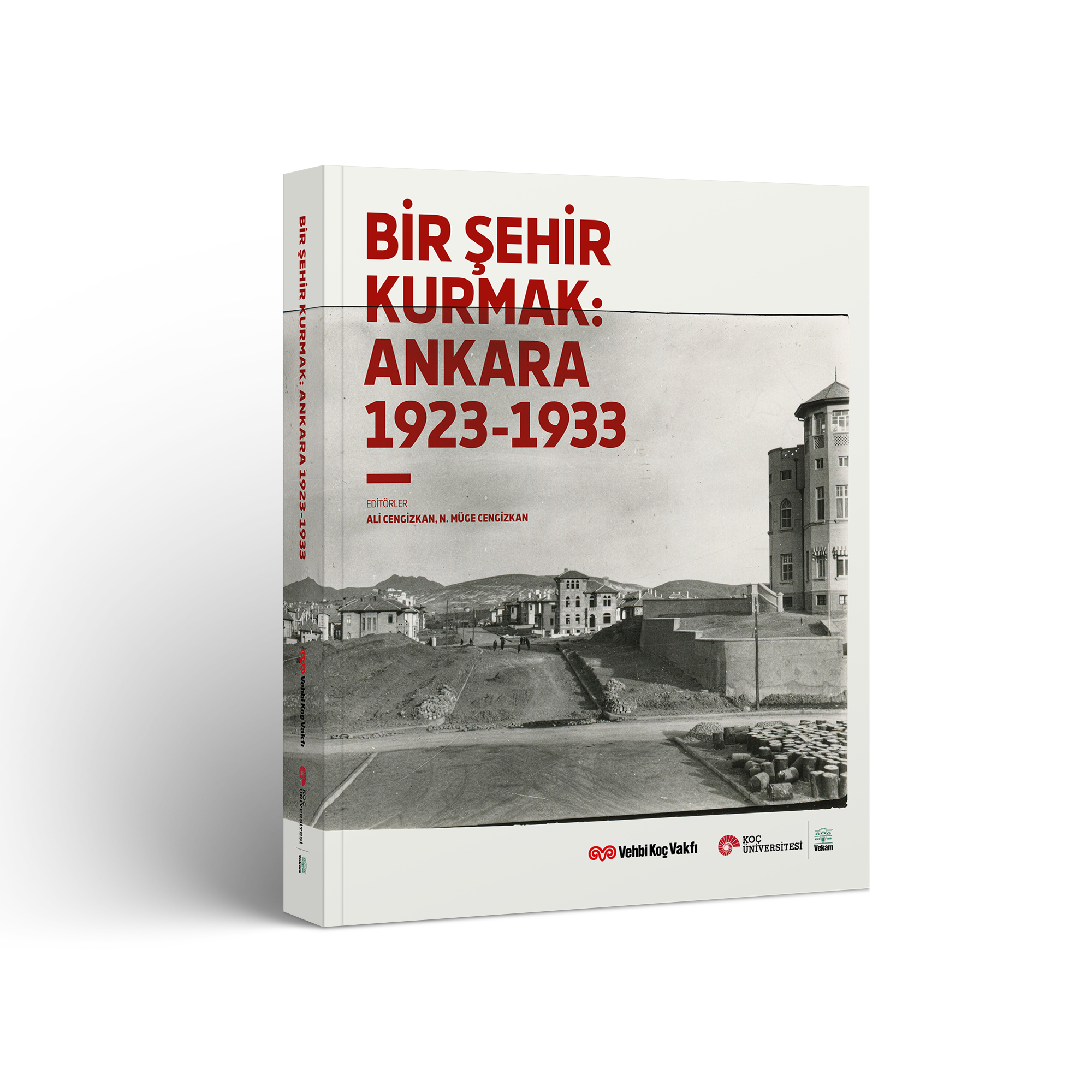BİR ŞEHİR KURMAK: ANKARA 1923-1933

Ali Cengizkan, N. Müge Cengizkan, Kasım 2019, Bir şehir kurmak: Ankara 1923-1933, Ankara: Koç Üniversitesi VEKAM Yayınları, 481 sayfa.
The book “Bir Şehir Kurmak: Ankara 1923-1933” published by Koç University VEKAM in accordance to the Exhibition, which presents the outcomes of a comprehensive research on the first decade of Ankara as the capital city in reference to the history of the New City, its modernization and construction processes.
The research ground of the study, which was carried out in the editorship of Ali Cengizkan and N. Müge Cengizkan, deals with the well-known yet due to its sudden transformation not documented New City (Yenişehir), through its construction and interaction with the Old City.
With a specific focus on the period between 1923-1933, the book deals with the definition/formation of city and park culture/culture of city and park, modernization of public services, definition of the culture of commemoration, identification of public culture and modernization of social life and the culture of habitation.
Being the experts on this specific period and themes, Günkut Akın, Yener Baş, Ömer Türkoğlu and Ali Cengizkan individually provide valuable discussions on, the architects of the period and their intellectual mediums/products and ideas; the press and the public opinion of the period; the habitation/dwelling patters of the first decade and the related cooperative organization and social mechanisms; indefinite aspects of how the dwellings of the period were constructed by the Municipality and the administration of Foundation; how the dwelling types were defined; expectations of the new citizens of the city after the radical social transformation; how politicians, land owners, planners, architects, local administrators, contractors, intellectuals conceptualize the dwelling culture and how they define their own dwelling types in relation to their needs.
The extend of the research is based on the reevaluation of uncovered documents, which include primarily the historiographic materials, original plan drawings, land registry and cadastral documents, materials from archives and collections, postcards-photocards and photo albums. Through using digital processing and assessment methods, and defining a foundational base for a micro-historical study, the exhibition integrates the structures and spaces of the new city to provide a holistic approach to this specific period.
Tarih: